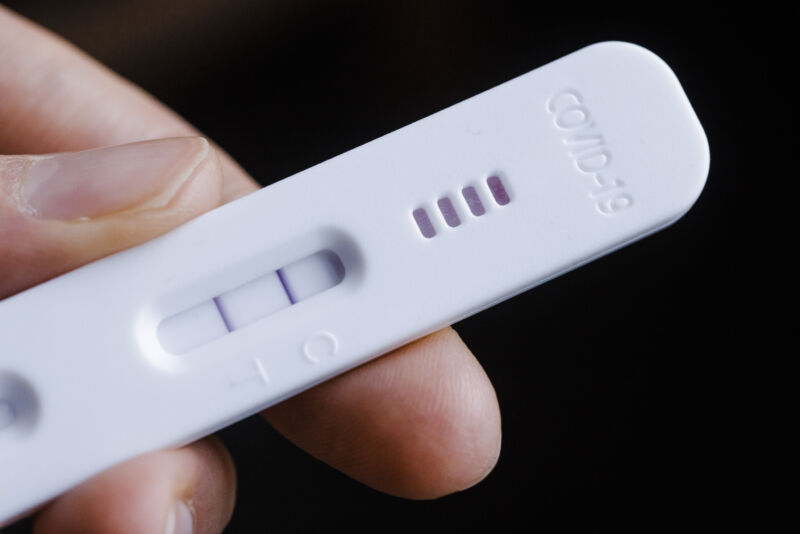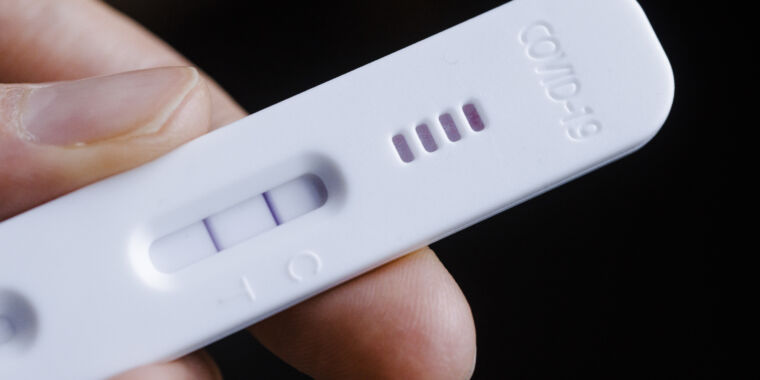
Omicron subvariant BA.2.12.1 has overtaken BA.2 as the dominant version of the pandemic coronavirus in the US, now accounting for an estimated 59 percent of cases nationwide. But BA.2.12.1’s reign may end as quickly as it began, with yet another batch of omicron subvariants gaining ground—BA.4 and BA.5—and threatening to cause more breakthrough infections.
BA.2.12.1 has a transmission advantage over BA.2, which itself has an edge over the initial omicron subvariant, BA.1, that caused a towering surge of US cases in mid-January. BA.2 peaked in mid-April, accounting for 76 percent of US cases at its height. But then came BA.2.12.1, which is named for being the 12th lineage stemming from BA.2 and the first branch of that BA.2.12 lineage.
When BA.2 peaked in mid-April, BA.2.12.1 accounted for about 18 percent of cases. It reached about 43 percent prevalence by mid-May and has since overtaken BA.2, which currently accounts for only about 35 percent of cases. BA.2.12.1 is dominant in every region of the country, except for the Northwest, according to the Centers for Disease Control and Prevention.
But, while BA.2.12.1 continues its rise, omicron subvariants BA.4 and BA.5 are gaining ground. In mid-May, BA.4 and BA.5 collectively accounted for less than 2 percent of cases nationwide. But now, they’re accounting for at least 6 percent, according to the latest figures from the CDC.
Heirs apparent
BA.4 and BA.5 aren’t new; they were first seen causing a massive wave of infection in South Africa in mid-to-late April that peaked in mid-to-late May. BA.4 and BA.5 are often clumped together because they share the same mutations in their spike protein, though they have different mutations elsewhere in their genetic blueprints. The spike protein is the critical protein that SARS-CoV-2 uses to latch onto human cells and, as such, is the prime target of vaccine- and infection-based immune responses.
BA.4 and BA.5 have a lot of unappealing qualities that have experts wary. First, the duo has a clear transmission advantage over BA.2.12.1, according to recent analyses of head-to-head comparisons of BA.4/5 to BA.2.12.1. They are poised to overcome BA.2.12.1 in the US, potentially causing yet another wave of infections.
A recent preprint study posted by researchers in Japan reported that BA.2.12.1, BA.4, and BA.5 replicate better in human lung cells than the previous reigning subvariant, BA.2. But, BA.4 and BA.5 cause more severe disease in hamsters than both BA.2 and BA.2.12.1.
The study also found that BA.4 and BA.5 can evade neutralizing antibodies generated from BA.1 and BA.2 infections. That means that people who have recovered from previous omicron infections may not have optimal protection from BA.4 and BA.5.
Additionally, another recent preprint study by researchers at Columbia University reported that BA.4 and BA.5 are better able to thwart immune responses in vaccinated and boosted people than BA.2 and BA.2.12.1. Specifically, BA.2.12.1 was 1.8-fold more resistant to the antibodies from vaccinated and boosted people than BA.2. But, BA.4 and BA.5 were collectively 4.2-fold more resistant. “Thus,” the authors concluded, the rise of BA.4 and BA.5 “is likely to lead to more breakthrough infections in the coming months.”








